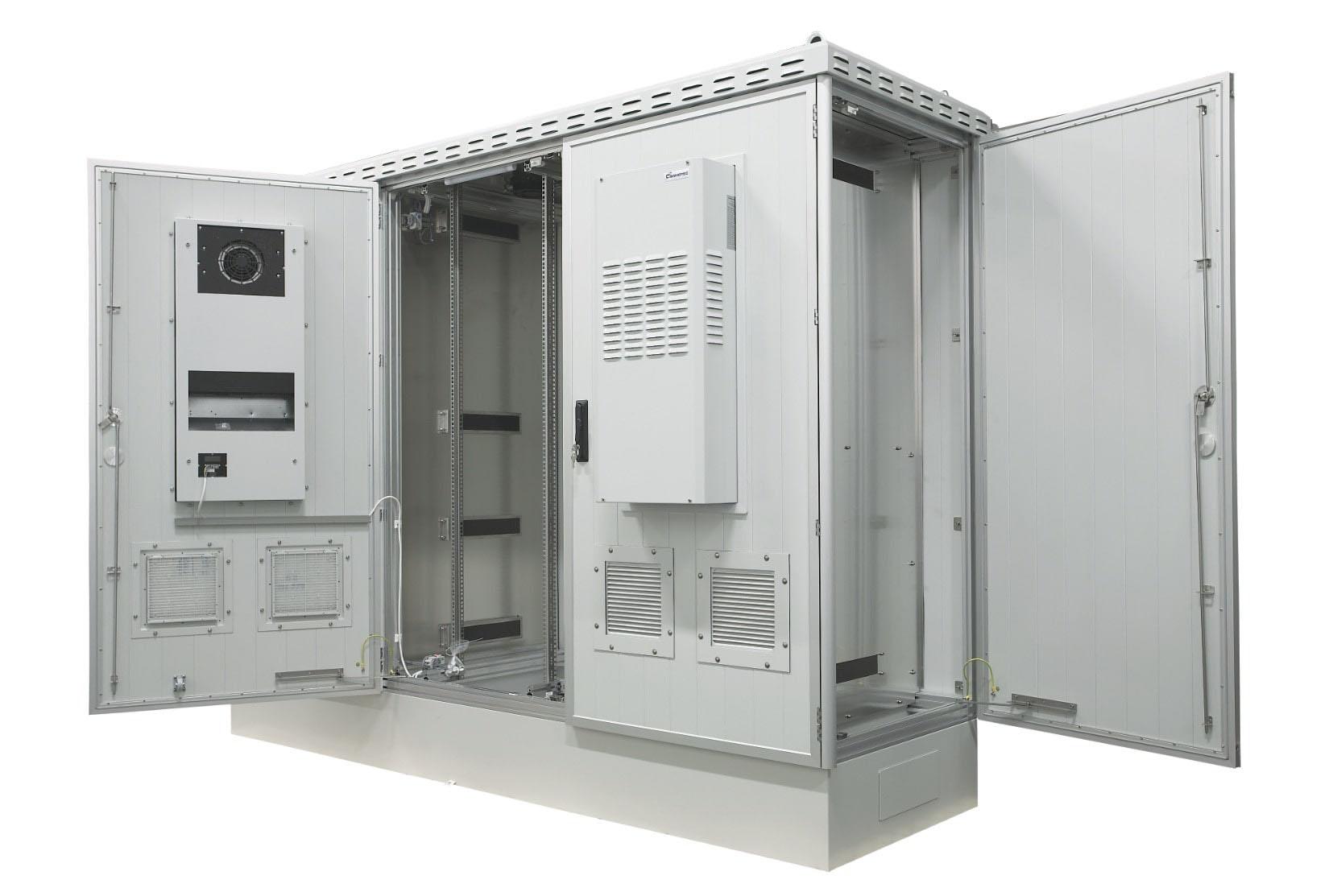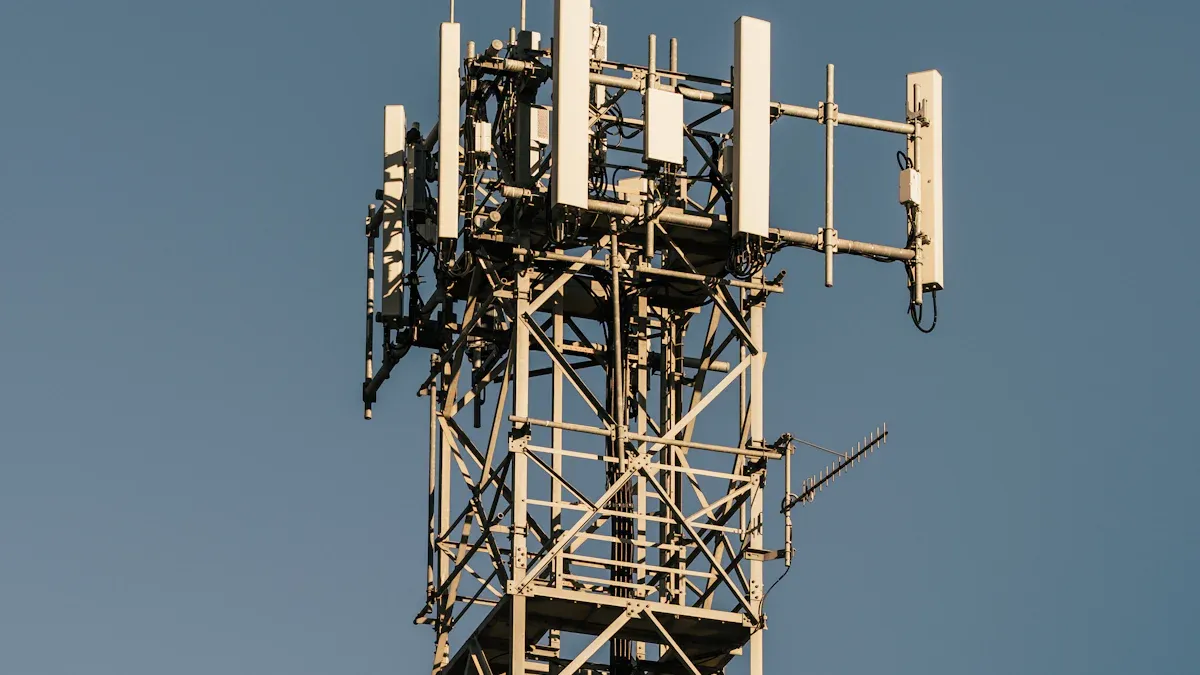Why Cold and Heat Harm Telecom Enclosure Batteries

Very hot or cold weather can damage telecom enclosure batteries. Cold makes their chemical reactions slower, and heat wears them out faster. Both extreme temperatures make them work less efficiently and not last as long. In bad weather, they might not work well or could stop suddenly. The area around these batteries is important for keeping them reliable. Keeping the temperature steady helps them work better and last longer. If not managed well, you might face communication problems and spend more on replacements.
Key Takeaways
Very hot or cold weather can harm telecom batteries. Cold makes chemical reactions slower, and heat wears batteries out faster. Both lower how well batteries work and shorten their life.
Keeping batteries at steady temperatures helps them work better. Use enclosures that control temperature to keep batteries between 68°F and 77°F.
Checking and taking care of batteries often can stop problems. Look at voltage, temperature, and current to find issues early and make batteries last longer.
Picking the right batteries for tough weather is important. Good-quality batteries made for changing temperatures can help avoid problems.
Not controlling battery temperature can cost more money. Replacing batteries often and system breakdowns can be avoided by managing battery conditions well.
Effects of Cold Temperatures on Telecom Enclosure Batteries
Impact on Battery Chemistry
Cold weather changes how batteries work inside. When it gets cold, the liquid inside batteries thickens. This slows down lithium ions, which help batteries charge and discharge. Because of this, batteries charge less efficiently.
Also, some Battery Management Systems (BMS) stop charging in very cold weather. This protects the battery but lowers its performance. Cold weather can also make charging equipment work poorly, making things worse.
Main effects of cold on batteries:
Thickened liquid slows lithium ion movement.
BMS stops charging in cold to prevent damage.
Charging equipment works less efficiently in cold weather.
Performance Challenges in Cold Weather
Cold weather makes batteries store less energy. When it's warm, batteries work at full power. But in freezing temperatures, they lose half their capacity. For example, at 30°C, a battery works fully, but at -20°C, it only works halfway.
Temperature (°C) | Battery Capacity (%) | Battery Capacity (Ah) |
|---|---|---|
+30 | 100 | 110 |
-20 | 50 | 55 |
This drop in capacity can cause telecom systems to stop working. You might see slower systems or even failures. These problems can interrupt communication and cost more money to fix.
Long-Term Reliability Issues in Cold Environments
Cold weather over time can damage batteries permanently. Chemical reactions inside the battery slow down, shortening its life. This means you may need to replace batteries more often.
Freezing temperatures can also physically harm batteries. Cold can crack the battery case or parts inside. These cracks can make the battery unsafe to use.
To keep batteries reliable, watch how cold affects them. Use insulation and control temperature to protect them from damage.
Effects of Heat on Telecom Enclosure Batteries

Faster Battery Damage
Hot weather can harm batteries by speeding up chemical reactions. This is called faster degradation, and it lowers energy storage ability. Heat breaks down battery materials quickly, causing rust inside. Rust weakens battery cells and makes them work poorly over time.
Temperature Rise | Shorter Battery Lifespan |
|---|---|
25°C (77°F) | 10 years |
33°C (92°F) | 5 years |
41°C (106°F) | 30 months |
The table shows how heat shortens battery life. At 33°C, lifespan drops from 10 years to 5 years. This means you’ll replace batteries more often, costing more money.
Heat also lowers the number of times a battery can charge and discharge. This makes batteries less reliable for long-term use.
Dangers of Overheating
Too much heat can make batteries unsafe. Overheating can break the casing of VRLA or lithium-ion batteries. This can release harmful gases or even cause fires.
Overheating can damage VRLA or lithium-ion battery casings. VRLA batteries may release hydrogen sulfide gas, which smells like rotten eggs. Lithium-ion batteries may catch fire or release smoke. If not stopped, overheating can cause thermal runaway. This can lead to fires, explosions, system failure, and injuries.
To avoid these dangers, batteries have safety features. These features help control heat and prevent failures.
Safety Feature | Purpose |
|---|---|
PTC Device | Stops high current surges |
CID | Opens circuit if pressure gets too high |
Safety Vent | Releases gas if pressure rises quickly |
Electronic Circuit | Stops current if temperature nears 90°C |
Control Circuit | Stops over-discharge at 2.50V/cell |
These safety tools help prevent accidents. But you still need to check battery temperatures to keep them safe.
Shorter Battery Life from Heat
Heat makes batteries wear out faster. Long exposure to heat damages parts inside, making them less effective. This leads to higher costs and more downtime.
Heat causes rust inside battery cells faster.
It lowers the number of charge-discharge cycles.
Extreme heat can cause thermal runaway and big failures.
Keeping batteries cool helps them last longer. Stable temperatures protect performance and reduce costly problems with telecom systems.
Importance of Environmental Conditions for Battery Reliability
Keeping Temperatures Steady for Better Battery Performance
Stable temperatures help telecom batteries work well and last longer. Big temperature changes mess up battery chemistry, making them less efficient. A steady environment keeps batteries strong and reliable.
Tools like thermoelectric coolers and insulated cabinets keep temperatures stable. These systems stop extreme heat or cold from harming batteries. For instance, one telecom company saw batteries last 25% longer with cooling systems. Air-to-air heat exchangers also help keep conditions steady for better battery performance.
Costs of Ignoring Temperature Control
Not managing temperatures can cost a lot of money. Batteries wear out faster in unstable conditions, needing frequent replacements. This leads to more downtime and higher repair costs.
Unsteady temperatures also make batteries degrade faster. They lose power and use more energy, which adds to expenses. Spending on temperature control systems can save money by making batteries last longer and work better.
How Enclosure Design Protects Batteries
Good enclosure design keeps batteries safe from weather and damage. It shields equipment from temperature swings and other risks. This protection helps batteries stay reliable and telecom systems run smoothly.
Modern enclosures focus on managing heat to avoid failures. They stop overheating, which extends battery life and prevents breakdowns. Custom enclosures, like those from Raycap, meet industry standards. They offer strong protection, ensuring batteries work well for a long time.
Practical Solutions for Protecting Telecom Enclosure Batteries
Temperature-Controlled Enclosures
Temperature-controlled enclosures help keep telecom batteries safe. They keep temperatures steady, usually between 68°F and 77°F. This prevents batteries from wearing out too fast or losing power.
Good airflow inside these enclosures removes heat and avoids failures. Advanced designs test batteries in tough conditions to meet safety rules. Using these enclosures makes batteries last longer and stops overheating or freezing.
Regular Maintenance and Monitoring
Checking and maintaining batteries often keeps them working well. Monitoring systems watch voltage, temperature, and current in real time. This helps find problems early and replace batteries before they fail.
Impedance testing is also useful. It spots issues by tracking battery changes over time. This method helps batteries last longer and avoids sudden breakdowns. Centralized systems make checks faster and improve efficiency.
By focusing on maintenance, you can keep batteries strong and avoid costly problems.
Selecting Batteries for Extreme Conditions
Picking the right batteries for tough weather is important. Some batteries are made to work well in hot or cold places. For example, lithium-ion batteries handle many conditions and are great for telecom use.
When choosing batteries, think about how they handle temperature changes and how long they last. Buying good-quality batteries lowers failure risks and keeps communication running smoothly.
Using temperature-controlled enclosures, regular checks, and the right batteries protects telecom systems and reduces downtime.
Very hot or cold weather can harm telecom batteries. Cold slows chemical reactions, and heat wears them out faster. Both make batteries less efficient and shorten their life. To keep communication working, control the temperature around batteries. Check your setup and use tools like temperature-controlled enclosures. Regular maintenance also helps protect batteries. These actions save money and prevent system problems. By planning ahead, you can protect batteries and keep systems running well.
FAQ
What happens if telecom batteries are unreliable?
Bad telecom batteries can cause power outages and communication problems. Fixing these issues can be expensive and time-consuming.
How does checking the environment help batteries?
Watching for things like temperature changes or low voltage helps. It keeps batteries working well and avoids sudden failures.
Why is keeping the temperature steady important for batteries?
Stable temperatures stop heat or cold from harming batteries. This helps them last longer and work better.
How does the design of enclosures help batteries?
Enclosures protect batteries from weather and temperature changes. This keeps them working and prevents power problems.
How does early problem detection stop downtime?
Finding problems like low voltage early can fix them fast. This avoids system failures and keeps communication running smoothly.
See Also
Selecting The Ideal Cooling Solution For ESTEL Telecom Cabinets
The Superiority Of Lithium Batteries Over Other Telecom Options
A Detailed Overview Of Telecom Cabinet Battery Risk Assessment
Maintaining The Perfect Temperature For Outdoor Telecom Cabinets
CALL US DIRECTLY
86-13752765943
3A-8, SHUIWAN 1979 SQUARE (PHASE II), NO.111, TAIZI ROAD,SHUIWAN COMMUNITY, ZHAOSHANG STREET, NANSHAN DISTRICT, SHENZHEN, GUANGDONG, CHINA

